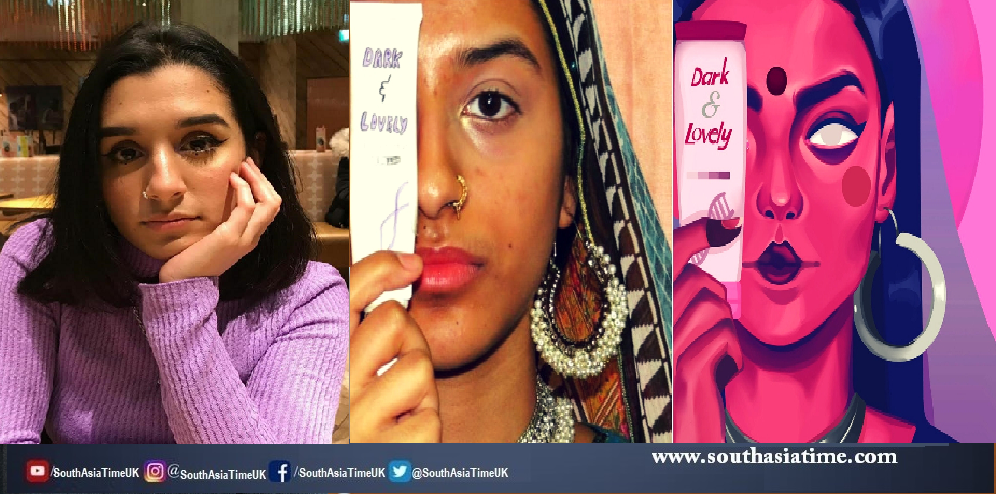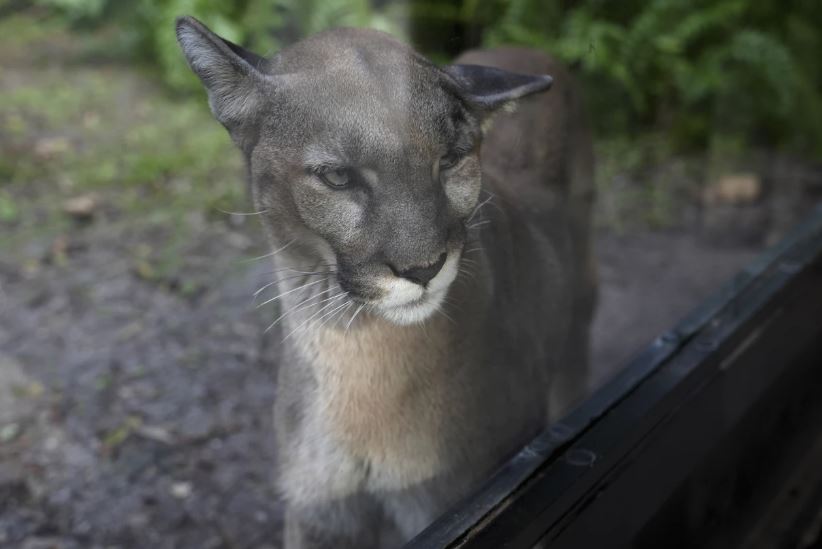Colourism in Asia & its link to colonialism and Indian beauty standards

Abriti Regmi
Understanding beauty ideals within Asian and particularly south Asian communities takes a lot of digging into the roots of these norms and generally, we tend to see that many of them originate from post-colonialization. There is something to be said for the pre-existing standards within these countries, such as the generational fixation on having clearer skin and big eyes, however, surely there are reasons why these preferences evolved into multimillion-dollar industries in skin bleaching and continue to thrive despite the emancipation of these countries from Western rule by the late 20th century.
One thing to be considered is the age-old caste system, originating in 1500 BC with the arrival of the Aryans in India. This dictated social class and provided a hierarchy amongst the general population; in some cultures, this is still very relevant. Before looking at an individual’s educational status or personality, in order to arrange marriages in south Asia, families will often look at the caste of an individual and if it is below par, they are simply dismissed as an option. This links into the question at hand, how does this contribute to beauty standards? Looking at the development of each caste throughout time periods, with social status comes better opportunities and it was almost natural that those at the top (the Brahmin) excelled academically and eventually also became richer. This meant that those doing high skilled, managerial, and white-collar jobs tended to be those at the top of the social stratification, and those doing manual labour were those at the bottom of the system (the Dalit in India). Essentially, this meant that the colour of your skin showed very clearly what caste you belonged to, as those doing manual labour or working outside in agricultural industries were exposed to the sun a lot more than those in office-based professions.
So, we cannot dismiss the presence of pre-existing and harmful social norms, simultaneously we cannot also dismiss the reinforcement of these rituals played by the British during their period of rule. During the period between 1857 to 1947, the British used the caste system as their main form of administration in India. This essentially meant that the British used this structure to dictate their own ethnology of individuals in society, which they did through racial and occupational categorisation. This was to judge which individuals were ‘trustworthy’ to work with the British government and which persons were to be not considered as options for higher-skilled jobs. As well as this, famous colonial administrators such as Herbert Hope Risley, whose expertise was in race science- a science that has since been discounted, used this to classify Indians into ‘Aryans’ (Indo-European) and ‘Dravidians’ (similar to the south-Indian region) through the width of their nose. This harsh grouping was similar to the rigid class structure present in British society at the time and so it allowed them to understand Indian societies better, however it also meant that these dangerous social criteria were pushed upon the Indian people even harsher than before. This paired with the forced deindustrialization of India by the British through the Calico acts of 1721, which banned all Indian exports of cotton textiles into Britain, meant that weavers in Bengal, the hub of muslin production became unemployed. Eventually, this meant that the population of the region fell by 90% and many weavers were forced to change occupation or, more likely due to the lack of mobility and education, resort to begging on the streets. This tightened the differences in class in India and almost set them in stone for the remainder of the British rule and arguably for even longer afterward. Thus, creating a larger polarisation of the social ladder and making it less attainable for those at the bottom to climb up, while at the same time increasing societal pressure to do so.
It is important to understand that as well as having a systematic presence in India, the physical presence of the British within the nation also caused the change and contributed to the warping of the Indian ideals of beauty. The British, with the help of the English East India Company, effectively decentralised the power in the country and gave a large majority to British merchants or ‘nabobs’ who came to India solely for the purpose of trade. This overwhelming presence of white superiors in India was only challenged by the movements begun by Mahatma Gandhi in 1930, a whole 173 years post company rule in India- in other words, after the East India Company had been granted the Diwani (right to collect tax revenue) and a direct role in Indian governance. Therefore, it is likely that the contemporary generation would have faced immense amounts of pressure living in India to conform to British rule. In relation to beauty standards, it is arguable that due to this presence of Britons the white skin, light hair and Eurocentric features became an idealised image of power and respect which the Indian natives were almost told to strive for- reinforced by the employment of the higher castes, who typically had lighter skin, in assisting British authority.
The role of the media and the ever-growing Bollywood industry in India must also be considered in this analysis as a key contributor to beauty standards. Looking at historical written works such as those by the Sangam poets we see descriptions of traditional south Indian beauty as having “skin like gold” and by writer Mohitlal Majumdar, who outlines the ideal Bengali woman as “medium complexioned”- these ideals are consistent with popular marital advertisements for women shared by individual families in the early 1900s. Of course, there would have been regional differences in the image of beauty for the typical Indian woman but despite this, the beauty standards of today seem to be very much generalised throughout the country. Arguably, this can be said to be due to the influence of the film industry in India.
Since its beginning in the 1910s the lack of representation for dark-skinned women in Bollywood is almost shocking, considering south Asia has some of the most diverse skin tones, even within individual countries such as India where the typical skin tone falls between the 4-6 range on the Fitzpatrick scale- a numerical measure (going from 1-6, one being the fairest skin tones and six being the darkest tones) designed for dermatological research into skin pigmentation. This discrimination is particularly prevalent amongst female film stars who are constant victims of scrutiny due to being ‘too dark’ despite not being nearly as tan as their male counterparts- and this colourism is anything but subtle. Popular movies such as the Tamil production Baahubali: The Beginning (2015) clearly display all the villainous characters as ‘savages’ with dark skin and curly hair while the protagonist is a hero with lighter skin. Depictions such as this are particularly dangerous as they allude to dark skin being almost dirty and with the target audience being Tamil speakers who tend to be of very deep skin tones, this undermines the natural beauty of the population and sets unrealistic beauty standards for the people of the region. As well as doing this, it also encourages unhealthy behaviour such as skin bleaching, explaining why fairness cream brands such as Fair and Lovely have such a large market in India- such large that they are effectively normalised by big celebrities.
In 2005 Emami launched Fair and Handsome, a version of the aforementioned Fair and Lovely that was targeted towards the male consumer. Popular advertisements for this particular product show global superstar Shah Rukh Khan encouraging a man to use the cream, resulting in him becoming significantly more attractive after becoming lighter and thus receiving much more female attention. So, it is not as if the conversation of skin bleaching is taboo within India- it is actually glamourized and endorsed by the big faces within Bollywood.
It is interesting to compare the West with the East when it comes to the topic of beauty standards because although countries in the East have developed, and are developing at such high rates, it seems as though the trends in the media tend to shift and change much quicker in Western countries. From the point of view of a teenager on social media, it is as if there is a new wave of trends every few months which determine the status quo for the time it is popular for. During this time celebrities will join the trends, they will gain momentum and eventually they will fade, essentially it means that the idea of beauty is often changing. However, looking at trends in the East, the traditional image of idealised beauty within cultures have stayed fairly consistent throughout the years. Perhaps this is due to a uniform culture within most countries in the East, which is different to countries like the UK which have large diverse communities and so there are a range of influences into popular culture. This also means that there are important differentials to be considered between these regions and an acknowledged argument is that of whether skin bleaching in the East can be compared to tanning in the West.
While tanning and bleaching are both procedures that may result in physical harm to an individual- what with the use of harsh UVA tanning beds and chemical skin bleaching agents, there are much safer and natural methods to tan as compared to bleaching. The argument is almost simple, the two procedures are most definitely not the same. On the one hand, tanning is temporary and can be done through creams that prove little to no danger to the health of someone’s skin and it is almost a personal choice. Compared to this, bleaching does not hold the same characteristics; going lighter poses serious health risks as it changes the physical biology of the skin for the worse, as stripping it of melanin makes it more susceptible to skin cancer and harm from the sun. It is a permanent procedure and although the individual may not realise it, embedded within colourism. In the West, if a woman does not tan her skin, she will not face any repercussions, if anything she may get teased for being ‘too pale’ but this is the extent of the negativity she will face. In some countries in Asia however, if a woman is too dark and does not bleach her skin, she may face serious judgement in the form of rejected marriage proposals, difficulties moving up the company ladder at work and constant societal judgement. In a country like India where it was reported in 2013 that 90% of marriages were arranged, it is likely that a lot of women will feel the pressure from a young age to conform to conventional beauty standards and therefore, bleach their skin. So, the difference is essentially that albeit both tanning and bleaching are methods to adapt the colour of your skin, tanning will never be done by an individual so that they are better off in a society built around the systemic oppression of darker skin individuals.
Be that as it may, it is definitely not the case that all individuals in society share the same mindsets. Within India there are a number of anti-colourist movements that have gained popularity over the past few years, some worth mentioning are ‘Unfair and Lovely’ and also ‘#ReclaimtheBindi’. Anti-colourist movements such as these are at the forefront of change; through them is the most likely way that we will reach a more inclusive future, which is why it is so important that they gain the recognition needed to catalyse this. Both movements mentioned were viral campaigns targeted against colourism in Asia, which have sparked big discussions about the effects of having such a normalised skin bleaching industry and in 2021 Sony Pictures Films is said to be coming out with a new movie, ‘Unfair and Lovely’ based on the struggles of a dark-skinned woman in India.
Creating generational differences is often frowned upon in closed cultures as it is seen as almost ‘rejecting’ your background, but when there are aspects of society that are freely accepted despite negatively affecting innocent individuals within that society, should it not be questioned? Of course, blaming colourism entirely on colonialism is difficult as there are a number of other connections that could be made, and so concluding with a cause and effect argument is almost unachievable. However, the understanding that colonialism has a key role in the historical development of beauty standards in India helps us create practical methods to move past this, as we realise that adopting white Western beauty ideals is damaging to a population that is completely different in physicality. In this analysis of colourism in India, it is essential to highlight that although it is so deeply rooted within culture and history, those who buy into these harmful standards are not the ones at fault. For those living in countries where the norm is to bleach your skin, it becomes difficult to act out and this issue is exceptionally harder for women who are often raised to be submissive to the expectations of others in these regions. It is therefore imperative that we talk about these and encourage the discussions that hold such importance, as it forces people to re-evaluate their worldview resulting in perhaps even a change in their opinions.
Bibliography:
- Deshpande, Manali S. “HISTORY OF THE INDIAN CASTE SYSTEM AND ITS IMPACT ON INDIA TODAY”. digitalcommons.calpoly.edu. 2010. Web. 25 May. 2020
- Johnson, Ben. “The East India Company and its role in ruling India”. historic-uk.com. 26 Mar. 2015. Web. 24 May. 2020
- Gelles, Rebecca. “Fair and Lovely: Standards of Beauty, Globalization, and the Modern Indian Woman”. digitalcollections.sit.edu. 2011. Web. 25 May. 2020
- Finn, Margot, Kate Smith et al. “The East India Company at Home”. discovery.ucl.ac.uk. 2018. Web. 23 May 2020
- Mariam, Simra. “Daring To Be Dark: Fighting Against Colorism In South Asian Cultures”. huffpost.com. 27 Mar. 2017. Web. 24 May 2020.

















Facebook Comments